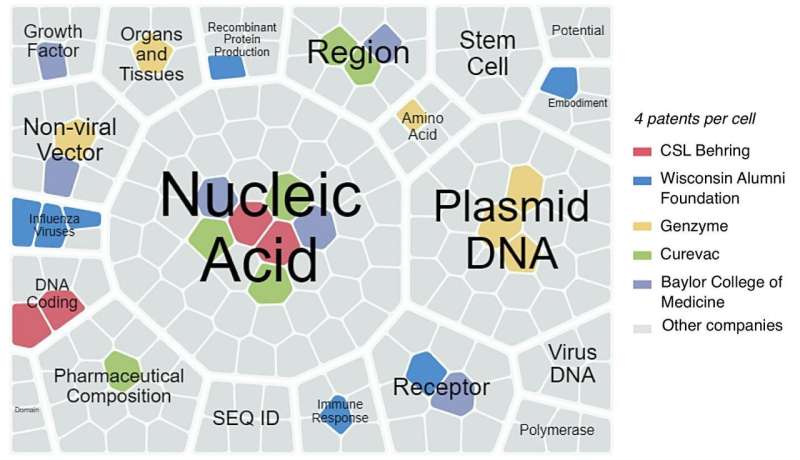Novel techniques for mining patented gene therapies offer promising treatment options

The global gene therapy market is expected to reach $13 billion by 2024 as new treatment options target cancers and other diseases.
Now, a team of scientists from Purdue University and other research institutions around the world have come together to better understand the growing number of worldwide patented innovations available for gene therapy treatment. They specifically focus on nonviral methods, which use synthetic or natural compounds or physical forces to deliver materials generally less toxic than their viral counterparts into the therapy treatments.
"The possibility of using nonviral vectors for gene therapy represents one of the most interesting and intriguing fields of gene therapy research," said Marxa Figueiredo, an associate professor of basic medical sciences in Purdue's College of Veterinary Medicine, who helped lead the research team and works with the Purdue Research Foundation Office of Technology Commercialization to patent her technologies related to health. "This is an innovative method for identifying the technological routes used by universities and companies across the world and uncovering emerging trends for different gene therapy sectors."
The scientists used big data, patent and clinical data mining to identify technological trends for the gene therapy field. The team's work is presented in the Feb. 7 edition of Nature Biotechnology. They envision that their analysis will help guide future developments for gene therapy.
This work brought together investigators from across the globe in a joint effort to use new databases and methods to better understand the trends of the gene therapy field in respect to nonviral vectors. Dimas Covas, coordinator of the Center for Cell-based Therapy, affiliated with the University of São Paulo in Brazil, lent his extensive experience in cell therapy. Aglaia Athanassiadou, Virginia Picanço-Castro and Figueiredo contributed their extensive experience on nonviral vectors for gene therapy. Cristiano Pereira and Geciane Porto brought their expertise in economics and business administration to the analyses. Each contribution was fundamental to achieving a new way to identify technological trends in this field.
"This work brought together investigators from very diverse disciplines to create a different perspective of the gene therapy field," Figueiredo said. "Our groups continue to work individually or in collaboration to generate and patent new vectors to help fill the needs of this re-emerging field of nonviral gene therapy."
More information: Virginia Picanço-Castro et al, Emerging patent landscape for non-viral vectors used for gene therapy, Nature Biotechnology (2020). DOI: 10.1038/s41587-019-0402-x
Journal information: Nature Biotechnology
Provided by Purdue University




















